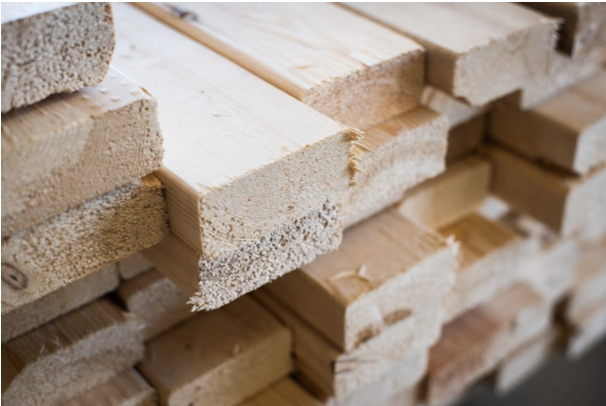By The Editorial Board
Nov. 29, 2021 6:34 pm ET

PHOTO: STEPHANIE STRASBURG/BLOOMBERG NEWS
President Biden says he feels your pain regarding inflation, and he’s made public-relations moves to show it, begging ports to move goods faster and OPEC to produce more oil. Too bad his Administration’s policies reveal different priorities. Witness the Commerce Department’s decision to raise tariffs on lumber, which will raise building costs in an already strained housing market.
The Commerce Department said last week that it will double the average tariff on Canadian softwood lumber to 17.9% from 8.99%. Softwoods like spruce and pine are the backbone of light construction, and a steady supply is key to restraining the rising cost of home building. For decades U.S. sawmills haven’t been able to meet domestic demand, but they’ve leaned on government to protect their market share.
Now the Biden Administration is taking up their cause, squeezing imported wood. Commerce Secretary Gina Raimondo has framed the decision as a bargaining move, pressuring Canada to curb its lumber subsidies. But the U.S. lobby admits the tariffs are a boon to American producers.
“This is exactly what must happen for further expansion of U.S. softwood lumber manufacturing and jobs,” said U.S. Lumber Coalition co-chair Jason Brochu when the tariff hike was proposed in May. That’s what tariff beneficiaries always say as they charge customers more amid limited supply.
There’s rarely a good time for trade restrictions, but the timing of this one is tragicomical. The same month Commerce revealed its tariff plan, lumber hit a record price of $1,650 per
thousand board-feet, more than three times the level before pandemic supply shortages began. Restored production drove prices down over the summer, but prices have risen in recent months amid rising construction demand, and now stand more than 75% above their pre-pandemic level.
The shortage would be much worse if not for Canadian lumber, which backs up U.S. output. Canada’s provincial governments give a guaranteed price to timber growers, so U.S. producers have a point when they say the playing field is uneven. But Canada’s subsidies are a small and likely shrinking part of its competitive footing. According to Working Forest, a trade publication, U.S. production has topped out at some 70% of domestic demand since the 1990s. Foreign producers fill the gap, led by Canada with a roughly 26% share.
The Biden Administration’s tariff resumes the U.S.-Canada lumber war where President Trump left off. After a 2006 agreement on softwood lumber expired in 2015, Trump Commerce Secretary Wilbur Ross later proposed to raise tariffs on imports. Washington and Ottawa continued to haggle over each other’s trade protections, but the Commerce announcement is an escalation that will do more harm to American home builders and home buyers.
President Biden campaigned against his predecessor’s tariffs, but his trade policy in office has been nearly as protectionist. He’s kept most tariffs in place, though cutting these border taxes would be a fast and easy way to reduce inflationary cost pressure. The Administration’s priority is pleasing unions and favored businesses, not reducing inflation.
Appeared in the November 30, 2021, print edition as 'Biden Joins the Lumber Tariff Wars.'